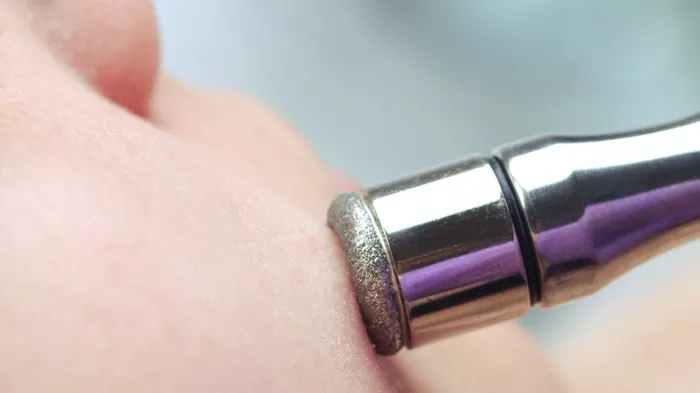Microdermabrasion is a popular cosmetic procedure that is used to exfoliate the skin and improve its appearance. It is a non-invasive treatment that can be done in a dermatologist’s office, a medical spa, or a salon by a trained professional. One of the most common questions people have about microdermabrasion is how long the session lasts. In this article, we will discuss how long a microdermabrasion session typically lasts, what factors can affect the length of the session, and what to expect during and after the procedure.
What is a Microdermabrasion Session?
A microdermabrasion session is a cosmetic procedure that involves the use of a special device that sprays tiny crystals or diamond tips onto the skin to exfoliate the outer layer of dead skin cells. The device then vacuums up the crystals along with the dead skin cells, leaving the skin looking smoother and more youthful.
The length of a microdermabrasion session can vary depending on several factors, including the size of the treatment area, the severity of the skin concerns being addressed, and the experience of the technician performing the procedure.
How Long Does a Microdermabrasion Session Typically Last?
A typical microdermabrasion session can last anywhere from 30 minutes to an hour. The length of the session will depend on the size of the treatment area and the severity of the skin concerns being addressed.
For example, a microdermabrasion session to treat fine lines and wrinkles on the face may take less time than a session to treat acne scars on the back. The technician performing the procedure will also adjust the suction strength and the size of the crystals or diamond tips depending on the patient’s skin type and the severity of their skin concerns.
What Factors Can Affect the Length of a Microdermabrasion Session?
Several factors can affect the length of a microdermabrasion session, including:
Size of the Treatment Area: The larger the treatment area, the longer the session will take. For example, a microdermabrasion session to treat the face may take less time than a session to treat the face and neck.
Severity of Skin Concerns: The severity of the skin concerns being addressed can also affect the length of the session. For example, a session to treat mild acne scars may take less time than a session to treat deep acne scars.
Experience of the Technician: The experience of the technician performing the procedure can also affect the length of the session. A more experienced technician may be able to complete the procedure more quickly and efficiently than a less experienced technician.
What to Expect During and After a Microdermabrasion Session
During a microdermabrasion session, patients may feel a slight scratching or vibrating sensation as the device is moved across the skin. Some patients may also feel a slight suction sensation as the device vacuums up the crystals and dead skin cells.
After the procedure, the skin may be slightly red and sensitive, but this usually subsides within a few hours. Patients should avoid direct sunlight and wear sunscreen for at least a week after the procedure to protect their skin from further damage.
Patients may also experience some mild peeling or flaking of the skin in the days following the procedure. This is normal and can be managed with gentle exfoliation and moisturizing.
It is important to follow the technician’s aftercare instructions to ensure the best possible results. Patients should avoid using harsh skincare products or exfoliants for at least a week after the procedure and should avoid swimming or using hot tubs for at least 48 hours.
Who is a Good Candidate for a Microdermabrasion Session?
Microdermabrasion is a safe and effective procedure for most people, but it may not be suitable for everyone. People with certain skin conditions, such as rosacea or eczema, may not be good candidates for microdermabrasion.
It is important to discuss any skin concerns or medical conditions with a dermatologist or trained professional before undergoing microdermabrasion. Pregnant women should also avoid microdermabrasion, as it has not been studied extensively in this population.
Conclusion
A microdermabrasion session typically lasts anywhere from 30 minutes to an hour, depending on the size of the treatment area and the severity of the skin concerns being addressed. The experience of the technician performing the procedure can also affect the length of the session.
During the procedure, a handheld device is used to spray tiny crystals or diamond tips onto the skin, which gently exfoliates the outer layer of dead skin cells. The device also vacuums up the crystals and dead skin cells, leaving the skin looking smoother and more youthful.
After the procedure, the skin may be slightly red and sensitive, but this usually subsides within a few hours. Patients should avoid direct sunlight and wear sunscreen for at least a week after the procedure to protect their skin from further damage.
Microdermabrasion is a safe and effective procedure for most people, but it may not be suitable for everyone. It is important to discuss any skin concerns or medical conditions with a dermatologist or trained professional before undergoing microdermabrasion to ensure the best possible results.

